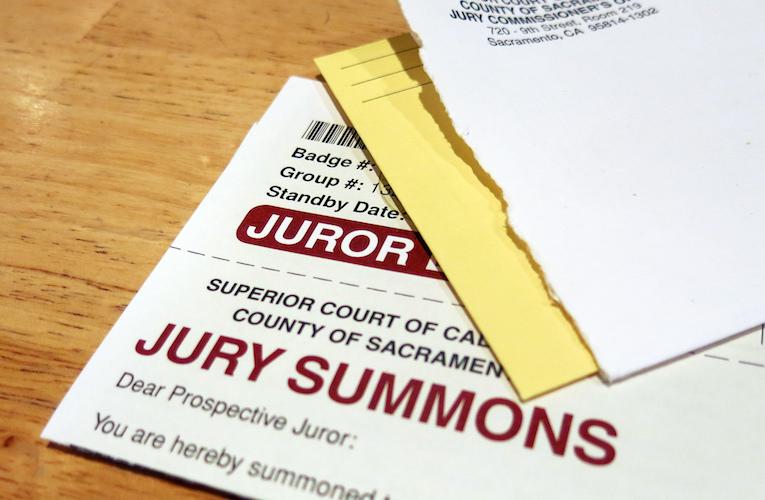What The Hell Is Jury Duty All About? We’ve Got The Scoop

Wikimedia Commons
If you’ve been to jury duty, we bet you have some things to say, but if you haven’t, it can seem like one big ball of confusion and frustration. What happens after you’re summoned? How do you get out of it? Is that even possible? Well, we’re about to give you the scoop on the impending doom that is jury duty.
Step 1: The Questionnaire
Typically, you’ll receive a questionnaire in the mail before ever being officially summoned for jury duty. The questionnaire will ask you things that essentially make sure you’re qualified to even be summoned, like whether you’re a U.S. citizen and if you speak English.
Step 2: The Summons
Dun dun dun… you get a summons. Girl, that means you’re going to court. But it does not mean you are immediately a juror on a trial — oh man, there are so many steps before that happens.
The summons will tell you where to go and when. What happens if you miss that date? If it’s by accident (hey, sometimes the mail doesn’t always get to you), you may have some luck talking your way out of a fine, which some districts implement severely. But in general, you could get in serious trouble for not showing up when you’re supposed to, so definitely do not ignore your summons. The law will come for you if you do.

Flickr / Robert Couse-Baker
Step 3: The First Appearance At Court
Depending on the size of your district, you could be one of dozens or one of hundreds of potential jurors showing up at the courthouse on the same day. When you arrive, you’ll likely be pointed to the “jury assembly” area, where you’ll likely wait for a while before seeing a judge or deputy. They may spend some time asking the room general questions like whether you actually live in the county or if you’ve performed jury duty before. Once that’s done, they’ll split you into groups and send you to an assigned room to start the real selection process.
By the way, when we say you may be waiting for a long time in the assembly room, we mean it. Bring a book (or a few), and depending on the time, you’ll be given a lunch break (likely with some of that allocated $40 per day that you’re entitled to for being a part of our lovely judicial system).
Step 4: The Selection Process
Alright, so you made it through the assembly room just fine. Now, you’re in an assigned room with your group of fellow potential jurors as well as the judge and lawyers on the case. The lawyers (both prosecution and defense) will then perform the “voire dire” part of the process, which literally means jury selection. They typically have about an hour each to question your group and you individually on any potential bias you may have toward the case. Though you won’t have been given specific details on the case (you’ll only know if it’s a criminal or civil case and approximately how long the case is), the lawyers are going to make sure you’re suitable to give unbiased judgment on their clients. For example, if the case involves a car accident and you were recently involved in a car accident, you may not be suitable for the case. The lawyers will decide on that.
If you’re deemed not suitable for the case, you’ll have to go back into the assembly room (nooo) and wait for further instructions. You could be dismissed from jury duty (for now) or you could be assigned to another room. You’ll also have the opportunity to speak up about why you can’t serve and, in some cases, you can be dismissed. If you haven’t been dismissed, you’ve been selected to be on the jury panel for this particular case. Oh, happy day.
Step 5: The Trial
You’ll be in a group of 12 or sometimes six jurors during a trial. Upon instruction, you’ll listen to the case and pay close attention to evidence and witnesses. Some trials allow you to take notes and others don’t so you gotta make sure you’re alert AF. Once each lawyer finally gives closing arguments, you’ll be sent to a private deliberation room to make your overall decision.
A few notes: Make sure you don’t consider evidence outside of what was shown to you or you’ll be charged with “juror misconduct,” which could result in a mistrial, meaning that the case has to be heard all over again with a new jury. If your group can’t come to a decision, the jury will be “hung,” meaning the case will be retired.
There are a ton more details to know about jury duty — like what kind of jury you’re serving on and what happens if you have to be on call for months (ugh), but this should get you through the basic process just fine. It may not always be fun, but jury duty could be a solid learning experience, right? …. Right?!











